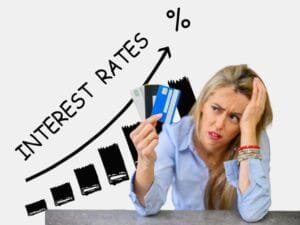CRE Financing
Commercial real estate financing (CRE) is a crucial component of the larger property investment landscape, encompassing various methods through which developers, property owners, and investors secure capital to fund their projects. From majestic skyscrapers to quaint retail shops, the spectrum of CRE represents more than just buildings; it signifies a complex interplay of economic drivers, market demands, and, quite importantly, risk assessments. As the adage goes, “with great power comes great responsibility,” and in the world of CRE, understanding cre risk mitigation is essential for anyone looking to navigate its enticing yet intricate pathways.
In an era where market volatility seems to be a constant companion, the significance of CRE financing cannot be overstated. Understanding the best CRE financing options available, ranging from traditional loans to sustainability-linked loans, enhances the opportunity for investors to capitalize on emerging trends, such as adaptive reuse loans and green building incentives. With the ever-increasing demand for sustainability in commercial real estate loans, investors must also consider how banks assess CRE risks. Factors like portfolio stress testing and interest rate hedging become pivotal in determining loan eligibility and investment viability.
Moreover, modern advancements in property technology, or proptech integration, are revolutionizing how financing is approached. This includes tools that aid in distressed asset management and enhance the overall transparency of investment options. As the market continues to evolve, so must the strategies employed in CRE financing to accommodate not only traditional investments but also innovations that promote sustainable practices and facilitate long-term growth.
Thus, for anyone looking to enter this lucrative domain, grasping the intricacies of financing structures and risk management will pave the way for informed decision-making and greater success in the commercial real estate arena.
Understanding CRE Risks
Investing in commercial real estate (CRE) is an exciting venture, but it comes with its share of risks. One major challenge investors face is market volatility, which can affect property values significantly. Fluctuations in demand due to factors like changing economic conditions or shifts in consumer behavior may lead to decreased rental income or longer vacancy periods. For instance, an attractive bustling downtown district could suddenly decline in desirability, leaving investors in a precarious situation.
Moreover, construction financing introduces its own unique set of risks. Projects can often run over budget or take longer than expected due to various factors such as permit delays or unforeseen site conditions. Imagine starting a renovation that stalls when a rare architectural gem is discovered in the walls—it adds historical value but disrupts your timeline and budget. Investors need to remain nimble, with a robust plan to manage unexpected challenges through adaptive reuse loans and appropriate contingency measures.
In addition to external factors, reliance on outdated assessment methods can lead to poor decision-making. How banks assess CRE risks can often leave investors in the dark about crucial red flags, resulting in potential financial pitfalls. A rigorous portfolio stress testing approach can better prepare investors for worst-case scenarios. Similarly, understanding distressed asset management practices is vital for mitigating risks associated with market downturns.
Ultimately, integrating proptech and sustainability in commercial real estate loans can create significant advantages. For instance, sustainability-linked loans not only support green building incentives but can also enhance property value and operational efficiency. This reflects a growing shift in investor preferences towards eco-friendly properties, which may yield long-term benefits while addressing contemporary market demand.
How Banks Assess CRE Risks

When it comes to commercial real estate (CRE) financing, banks employ a multifaceted approach to assess risks associated with their lending decisions. The process primarily revolves around analyzing key factors that influence the overall viability of a loan. One critical aspect is portfolio stress testing, which involves simulating various economic scenarios to gauge how the borrower’s portfolio would perform under adverse conditions. This analysis is vital in determining the resilience of the investment against market volatility and potential downturns.
Another significant criterion is a thorough market analysis, whereby banks review regional economic conditions, property values, and demand-supply metrics within targeted markets. Understanding current trends, such as the rise in sustainability in commercial real estate loans, has shifted how banks view properties, emphasizing the importance of environmental considerations in their lending criteria. For instance, properties demonstrating energy efficiency or those that comply with green building incentives are often rated more favorably. As a result, the integration of proptech solutions has become common, as banks increasingly rely on data analytics to streamline their assessment processes.
Moreover, banks evaluate borrower creditworthiness, an essential factor in determining interest rates and loan terms. Elevating this further, they also consider the type of loan, such as construction financing or adaptive reuse loans, which may entail different risk levels. By assessing historical performance and future earnings potential, lenders can better predict how a property will sustain its value. Additionally, factors like having a well-structured exit strategy or seeking distressed asset management can reflect a borrower’s ability to handle unexpected challenges.
In this landscape, understanding how banks assess CRE risks is paramount for investors and developers alike. By considering various factors like sustainability-linked loans, interest rate hedging, and the overall economic climate, lenders can maximize their risk mitigation strategies while providing the best CRE financing options for their clients.
Best CRE Financing Options

In the domain of commercial real estate (CRE) financing, selecting the best options can significantly influence both the potential risks and returns associated with investments. Traditional loans are typically the first choice for many investors. These loans provide predictable payment structures and often come with competitive interest rates. However, it is crucial to align these traditional loans with appropriate cre risk mitigation strategies, as banks assess numerous factors to gauge the risk involved, including property valuation, borrower creditworthiness, and market conditions.
Real Estate Investment Trusts (REITs) represent another viable financing avenue by allowing investors to pool capital to purchase and manage income-generating properties. In addition to being an attractive investment option, REITs can provide a buffer against market volatility; however, investors should remain cognizant of the operational risks associated with managing concrete assets and the long-term implications for their portfolios.
As sustainability becomes increasingly prioritized, sustainability-linked loans have emerged as a compelling financing option. These loans offer reduced interest rates for projects that meet specific environmental goals, thereby integrating the principles of sustainability into the CRE financing landscape. Additionally, green building incentives related to energy efficiency can enhance the overall viability of projects, making them more attractive to lenders.
Adaptive reuse loans enable investors to transform existing structures for new purposes, which not only serves as an excellent distressed asset management strategy but also aligns with contemporary sustainability goals. Furthermore, an increasing number of lenders are recognizing the importance of portfolio stress testing to identify potential vulnerabilities amid varying economic conditions.
Finally, exploring adaptive reuse financing options can dovetail with interest rate hedging strategies. By implementing these practices, investors can achieve long-term stability and minimize risks, ultimately leading to more resilient and successful commercial real estate portfolios.
Sustainability in Commercial Real Estate Loans
In recent years, sustainability has emerged as a critical factor in shaping the landscape of commercial real estate (CRE) loans. As the world grapples with climate change and resource scarcity, lenders and investors are increasingly recognizing the importance of eco-friendly initiatives. This shift reflects a growing trend where sustainability-linked loans (SLLs) play a significant role in CRE financing. These loans are structured to offer lower interest rates or enhanced terms for borrowers who commit to meeting specific environmental benchmarks, thereby aligning financial incentives with sustainable practices.
The adoption of sustainability in commercial real estate not only contributes to environmental health but also offers a range of financial advantages for property owners. Properties that prioritize sustainability often see increased operational efficiencies, reduced utility costs, and enhanced tenant satisfaction. Furthermore, as market volatility continues to influence CRE decisions, properties that incorporate sustainability are perceived as more resilient and less susceptible to economic downturns. This perception can lead to a favorable negotiating position with lenders and improve access to the best CRE financing options available.
Moreover, lenders’ methodologies in assessing CRE risks are evolving to incorporate sustainability metrics. For instance, banks are beginning to implement portfolio stress testing that accounts for climate-related risks, particularly in regions susceptible to natural disasters. Some institutions are introducing green building incentives to attract environmentally conscious developers, thus aligning their goals with sustainable economic growth. Additionally, the rise of proptech integration allows for better tracking of sustainability initiatives and enhances transparency for both borrowers and lenders.
In summary, sustainability in commercial real estate loans is no longer an optional consideration but a pivotal strategy for successful financing. By prioritizing eco-friendly initiatives through loans, stakeholders can enhance property values while contributing to a more sustainable future, making green an astute financial strategy in the modern era.
Interest Rate Hedging: The Secret Sauce
Interest rate hedging is often a misunderstood concept, yet it plays a vital role in the realm of commercial real estate (CRE) financing. Much like choosing between a fixed-rate mortgage and an adjustable-rate one, interest rate hedging can significantly impact the performance of your investments during periods of market volatility. Engaging in this practice fundamentally offers a layer of protection against the unpredictable fluctuations that can affect financing costs over time.
At its core, interest rate hedging involves strategies that aim to mitigate the risks associated with interest rate changes. For example, when securing best CRE financing options, a borrower might opt for financial instruments like swaps or options. These tools allow market participants to lock in current interest rates, thereby safeguarding against sudden rate increases that could lead to higher debt servicing costs. Understanding how banks assess CRE risks becomes pivotal here, as they may recommend such hedging strategies to optimize loan structuring.
Just as you might choose to wear a raincoat during unpredictable weather, having a hedging strategy can stave off potential financial downpours. This approach is especially relevant when considering sustainability in commercial real estate loans, as many investors are factoring in long-term costs associated with climate risks. By integrating adaptive reuse loans into the equation, property owners can enhance their assets’ value while simultaneously hedging against rising material costs influenced by interest rates.
An equally intriguing facet of interest rate hedging is its intersection with technology. The integration of proptech, for instance, has transformed traditional financing practices, enabling dynamic portfolio stress testing and efficient monitoring of interest rate fluctuations. This technological evolution not only simplifies distressed asset management but can also make pursuing sustainability-linked loans more feasible. In a world characterized by uncertainty, adopting a robust interest rate hedging strategy is indeed the secret sauce to securing financial stability and preserving one’s sanity amid challenges.
Proptech Integration in CRE Financing
In the rapidly evolving landscape of commercial real estate (CRE), the integration of technology, particularly property technology or proptech, serves as a transformative force. This innovative approach has not only streamlined CRE financing processes but also offers substantial benefits for risk mitigation. The ability to harness big data, artificial intelligence, and automated processes allows stakeholders to make informed decisions that are pivotal in managing the complexities associated with commercial properties.
One humorous scenario that encapsulates the significance of technology is the classic “printer jam” incident during an important deal negotiation. Visualize stakeholders scrambling to get physical documents ready, all while the clock is ticking. Proptech solutions mitigate such mishaps by digitizing documentation processes, enabling electronic signatures and automated workflows. As CRE professionals leverage digital platforms, they can avoid a flurry of stress caused by technological failures while enhancing overall efficiency.
The role of proptech in CRE financing extends beyond merely expediting processes. By incorporating advanced analytics and machine learning algorithms, banks and financial entities can enhance their assessment procedures, thus enabling more accurate evaluations of CRE risks. This is essential for institutions aiming to establish the best CRE financing options, particularly in an environment characterized by market volatility.
Furthermore, proptech facilitates portfolio stress testing and analysis, allowing for real-time insights into market fluctuations and tenant performance. This capability is instrumental for investors looking to navigate distressed asset management and secure sustainable, long-term returns. Coupled with green building incentives and sustainability-linked loans, technology enables stakeholders to make ecologically conscious decisions that align with emerging regulatory standards.
Ultimately, the integration of proptech within CRE financing not only optimizes operational efficiency but also strengthens risk mitigation strategies. As companies continue to adopt innovative solutions, they position themselves to adapt to an ever-changing market, creating a resilient framework for future growth and investments.
Distressed Asset Management: A Silver Lining
Distressed asset management is often perceived as a daunting landscape, rife with challenges and complexities. However, amidst these challenges lie unique opportunities that can lead to significant financial gains for investors. The concept is akin to a “rescue mission” for failing properties, where the objective is to transform underperforming or troubled assets into lucrative investments. The path to success is paved with strategic planning, calculated risk assessment, and, of course, a dash of creativity.
Investors venturing into distressed asset management should commence with comprehensive portfolio stress testing. This vital process involves analyzing potential risks associated with various properties and projecting how they would perform under different market conditions. Given the dynamic nature of market volatility, understanding how banks assess CRE risks is pivotal in determining the viability of the investment. A successful acquisition hinges on grasping both the financial and operational challenges that may arise.
Once a distressed asset is acquired, the next phase involves implementing an adaptive reuse strategy that aligns with current market needs. For instance, converting former retail spaces into mixed-use developments not only addresses contemporary demands but can also unlock incentives, such as sustainability-linked loans. In this era of heightened environmental awareness, integrating green building practices into the turnaround strategy can significantly improve project viability and attract investors looking for long-term returns.
Additionally, employing technology through PropTech integration can streamline operations and enhance property management efforts. As traditional management methods give way to innovative solutions, operators can harness data analytics to inform decision-making. A tailored approach enables the rehabilitation of distressed assets while mitigating CRE risk effectively. By embracing these strategies, investors can turn what seems like a collapsing venture into a silver lining in distressed asset management.
Conclusion: Embracing CRE Financing with Confidence
As we navigate the complex landscape of commercial real estate financing, it is evident that understanding the intricacies of CRE risk mitigation is paramount for both seasoned investors and newcomers alike. Throughout this discussion, we have highlighted various strategies such as portfolio stress testing and distressed asset management, which can serve as essential tools for assessing and managing risks associated with commercial real estate investments. Implementing best CRE financing options, including sustainability-linked loans and adaptive reuse loans, can further enhance financial viability and environmental resilience.
Additionally, the role of banks in assessing CRE risks cannot be overstated. By understanding how banks evaluate property value, market volatility, and the overall risk profile of investments, stakeholders can better prepare themselves to secure financing that aligns with their strategic goals. The integration of proptech solutions not only offers more efficient processes but also supports better risk assessment through enhanced data analytics.
Furthermore, incorporating sustainability in commercial real estate loans is increasingly important, as green building incentives are gaining traction in the market. By prioritizing sustainability, investors not only comply with regulations but also appeal to a larger pool of environmentally conscious tenants, potentially increasing property value over time. Additionally, proactive interest rate hedging can safeguard against financial uncertainties, ensuring that financing remains manageable amid fluctuating economic conditions.
Engaging with the broader CRE community can also enrich your experiences and insights. We encourage you to share your thoughts, questions, and experiences regarding commercial real estate financing. By participating in discussions and exchanging knowledge, we can collectively foster a better understanding of CRE financing and risk mitigation measures, empowering ourselves to embrace these opportunities with confidence.
























